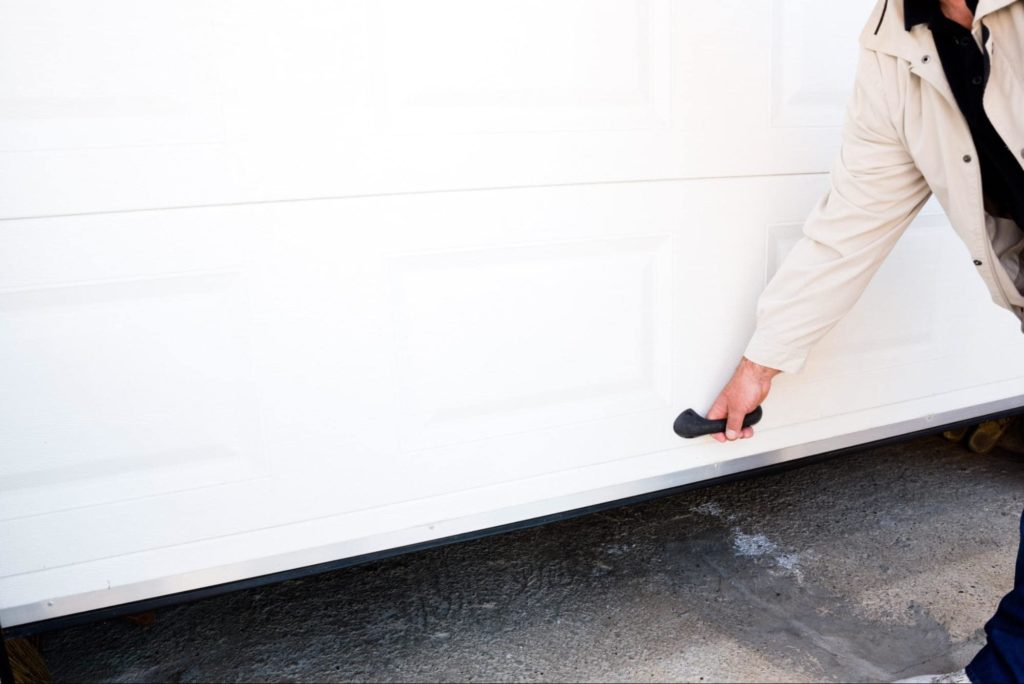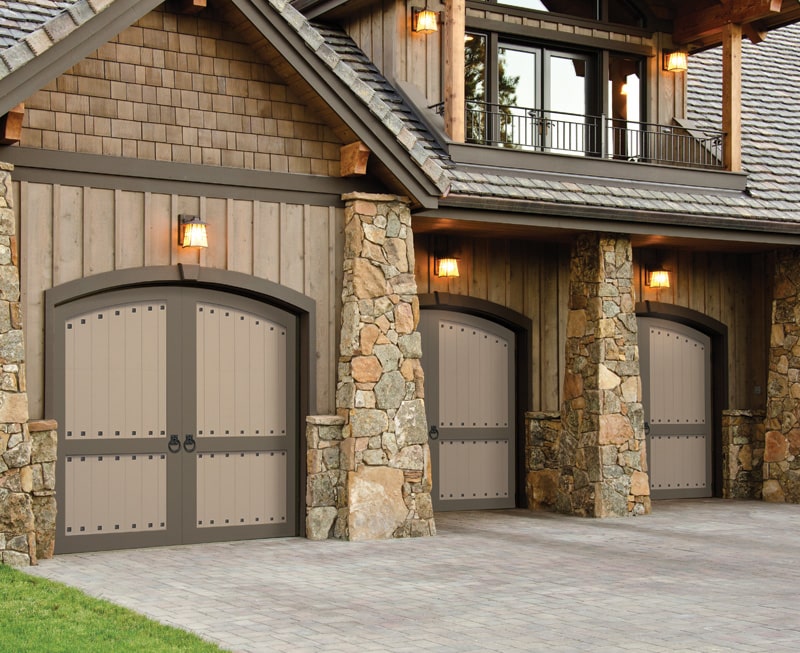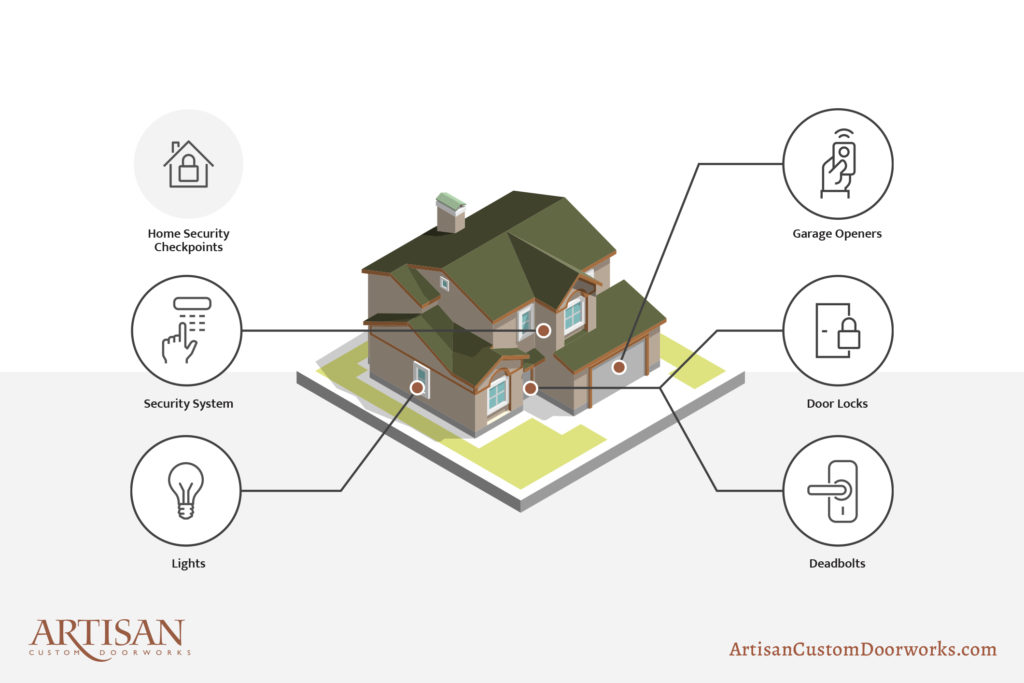You’ve put a significant investment into a brand-new garage door, so it’s crucial to keep both your home and garage safe. While only 9% of break-ins occur through the garage door, that still adds up to around 225,000 incidents annually in the U.S., meaning one of those could potentially happen to you. That’s why we’ve compiled some practical garage door security ideas and tips to help ensure your peace of mind and protection.
Why Invest in Garage Door Security
According to recent FBI data, a burglary happens in America roughly every 26 seconds. It’s unsettling, but the reality is that home invasions can occur anywhere, regardless of how safe your neighborhood might seem. Before taking any steps towards enhancing your garage door security, consider reviewing these additional crime statistics:
- The majority of burglaries happen between 10 AM and 3 PM when most people are at work.
- 74% of all burglaries target residential properties.
- In 2019, the FBI reported 290,909 daytime break-ins compared to 195,884 at night.
- About 28% of burglaries occur while someone is home.

Garage Door Security Tips: Outside Your Garage Door
Securing your garage door from the outside involves several effective methods, including installing garage door openers, outdoor lighting, cameras, and home alarm systems. Let’s explore each of these options in detail and how they can strengthen your home's defenses.
Garage Door Openers
One of the simplest ways to enhance your garage door security is to invest in a remote-controlled opener or keypad system. These devices allow you to open and close your garage door without physical keys, reducing the chances of unauthorized access. Here are some recommendations for using your garage door opener effectively:
- Change your opener code regularly. Whenever you go on vacation or suspect someone might have noticed your code, update it to a new combination. This prevents opportunistic criminals from gaining access.
- Store your opener securely. If you carry your opener in your vehicle, make sure it’s stored out of sight and in a safe location when not in use.
- Turn off the power. When you’re leaving town for an extended period, disconnecting the power supply to your garage door can prevent potential intruders from operating it remotely.
How Often Should You Update Your Garage Door Code?
Assigning unique codes to each family member is ideal for tracking who enters and exits your garage. This practice is particularly helpful if you hire a house or pet sitter while you’re away. Just like updating passwords for online accounts, it’s advisable to change your garage door code every six months. If you notice suspicious activity or repeated failed attempts to enter, consider changing the code immediately. Avoid reusing old codes to minimize risks.

Outdoor Lighting
Motion-sensor lights can significantly deter criminals by illuminating areas where they might attempt to hide. When these lights activate upon detecting movement, it becomes difficult for intruders to remain concealed. Additionally, incorporating interior lighting around your garage door and windows creates further visibility and discourages criminal activity.
Another option is purchasing a spotlight that connects to your smartphone, giving you full control over its activation. Consider setting it to turn on automatically whenever your garage door opens, allowing you to monitor unusual activity remotely.
Cameras
Placing a security camera near your garage can reduce crime rates by up to 50%. Studies show that even displaying warning signs about surveillance can act as a deterrent. Cameras installed both inside and outside your garage provide comprehensive coverage. Some models offer live streaming via your phone, enabling instant alerts when motion is detected within their range.
Home Alarms
A home alarm system serves as an essential safeguard against intrusions, especially during late hours or when you're away. Modern systems often integrate seamlessly with smartphones, ensuring constant connectivity even when you're miles from home. There’s a wide array of garage-specific devices available, each catering to specific needs—whether it’s monitoring movement or detecting forced entry.
Make Your Garage Door More Secure
Beyond external security measures, there are several internal practices you can adopt to fortify your garage door further. Even though it’s rarely the primary entry point for burglars, securing your garage could prevent over 110,000 break-ins per year, one of which might otherwise affect your property.
- Think Like a Criminal. Spend time examining your garage and surroundings to identify weak spots. This exercise helps prioritize areas needing extra protection.
- Set Up Timers. If you frequently forget to close your garage door, installing a timer ensures it closes automatically at set intervals each day.
- Secure All Access Points. Ensure all exterior doors and windows are locked, along with any connecting pathways between the garage and living spaces. Locked internal doors hinder access to the rest of your home if an intruder breaches the garage.
- Never Leave Your Door Open. Always be mindful of whether your garage door remains open unattended. Even during daylight hours, this could signal vulnerabilities to opportunistic thieves.
- Store Tools Safely. Items such as ladders, hammers, and pruning shears can aid intruders in breaking into your home. Keep such tools locked away in the garage or an external shed with a sturdy lock.
- Add Shields. Simple barriers, like shields covering your emergency release cord, can thwart criminals attempting to manipulate your door mechanism.
- Opt for Privacy Glass. While glass panels enhance aesthetics, they also allow passersby to glimpse inside. Using frosted or obscured glass maintains style while improving privacy and security.
When a burglar targets your garage door, they can gain entry swiftly—often within ten seconds. By prying open the seal at the top of the door and inserting a wire or coat hanger, they can trigger the emergency release mechanism. Taking preventive actions now can save you from future headaches.
Staying Insured
Even with robust security measures in place, no system guarantees absolute safety. For added peace of mind, confirm that all ancillary buildings, including detached garages and sheds, are covered under your homeowner’s insurance policy. Personal belongings stored in the garage, like tools or sports equipment, should fall under personal property coverage rather than homeowner’s insurance. Similarly, any damage to vehicles parked inside due to vandalism or theft would typically be handled through auto insurance policies.

This article was initially posted on March 22, 2017, and updated on September 27, 2022.
Remember, investing in garage door security isn't just about protecting your property—it’s about safeguarding your family and creating a worry-free environment. Stay vigilant and proactive to maintain the integrity of your home.
Intelligent Wireless Mouse AI Voice,Smart Wireless AI Voice Mouse,Wireless AI Voice Mouse
Cixi Congfeng Fluorine Plastic Co.,Ltd , https://www.cfptfeseal.com